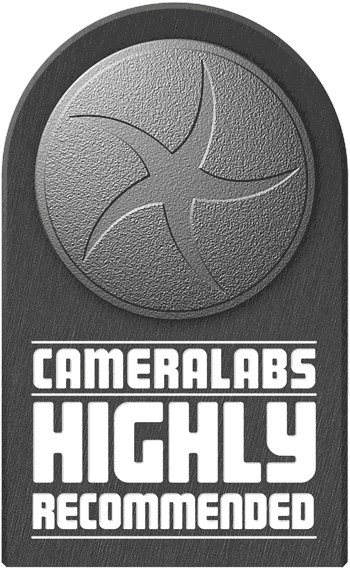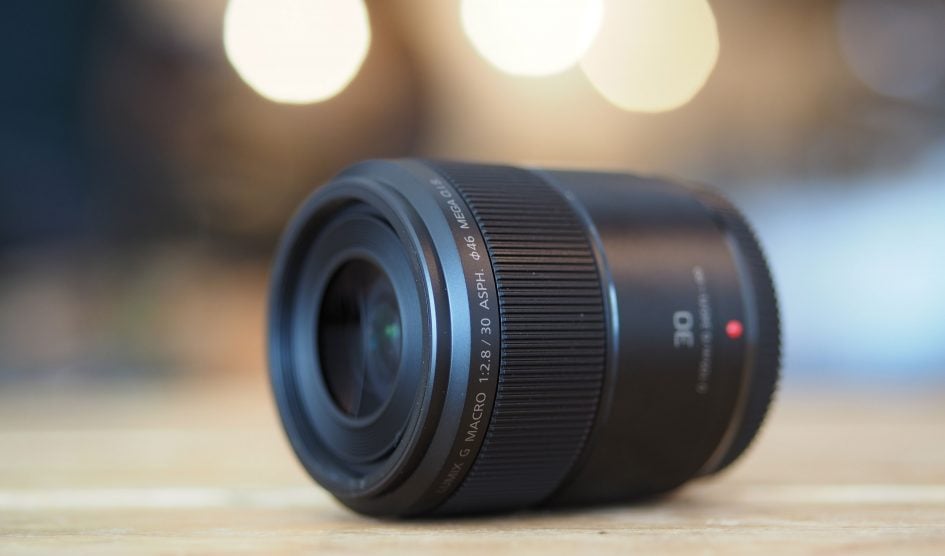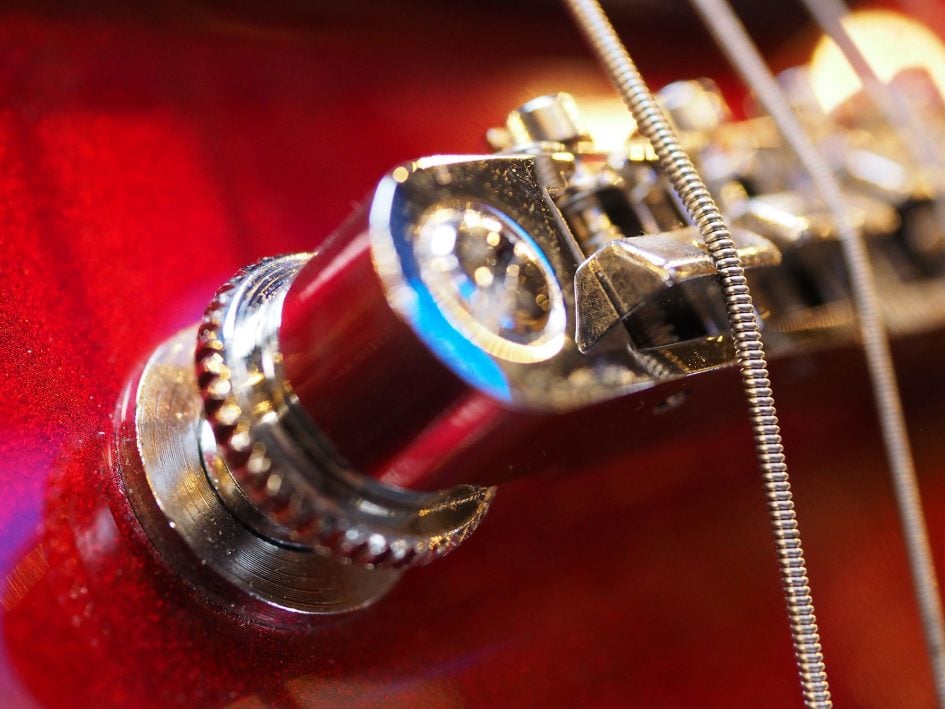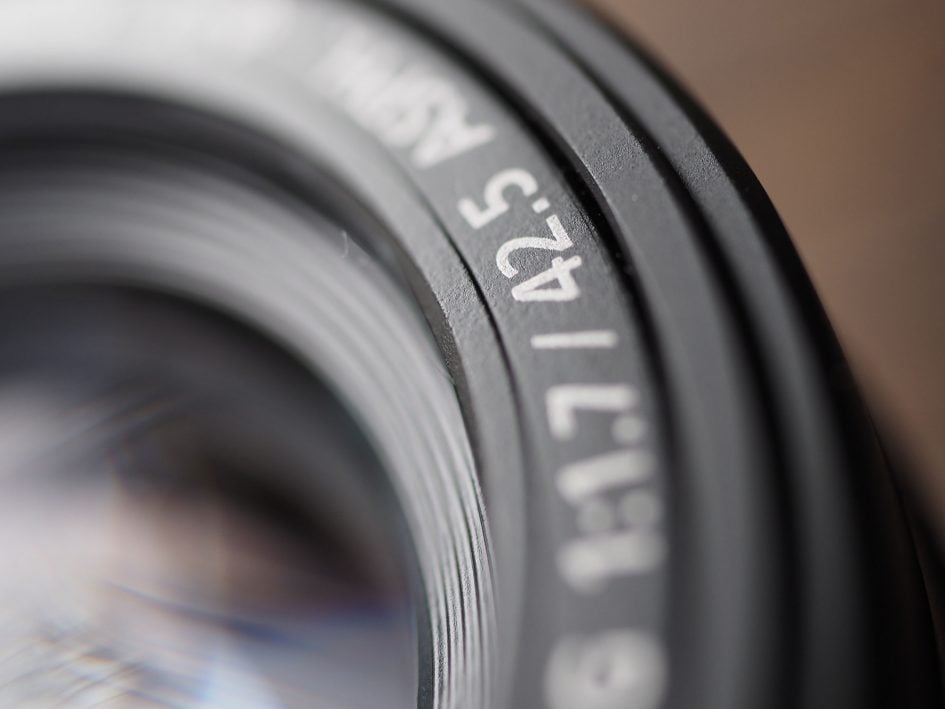Lumix 30mm f2.8 Macro review
Summary
 There's no denying the Lumix G 30mm f2.8 represents great value for a high quality macro lens. It may be the cheapest way to enjoy true 1:1 facts of life with AF on a native Micro Four Thirds lens, but there doesn't come along to be any compromise on quality. My only complaint is the want of a concentrate clipper which could have landscaped AF speeds for not-large situations, but even with the wide-cut focusing range at its disposal, the AF is fast plenty. Considering the close-to-standard coverage also makes it the most flexible of the three endemic macro lenses, information technology's get a highly compelling option for any Panasonic or Mount Olympus possessor who's interested in close-up photography.
There's no denying the Lumix G 30mm f2.8 represents great value for a high quality macro lens. It may be the cheapest way to enjoy true 1:1 facts of life with AF on a native Micro Four Thirds lens, but there doesn't come along to be any compromise on quality. My only complaint is the want of a concentrate clipper which could have landscaped AF speeds for not-large situations, but even with the wide-cut focusing range at its disposal, the AF is fast plenty. Considering the close-to-standard coverage also makes it the most flexible of the three endemic macro lenses, information technology's get a highly compelling option for any Panasonic or Mount Olympus possessor who's interested in close-up photography.
Pip out now!
Stay prices on the Lumix G 30mm f2.8 at Amazon, B&H, Adorama, or Wex. Alternatively get yourself a copy of my In Tv camera book or plow Pine Tree State to a coffee! Thanks!
Lumix 30mm f2.8 Macro go over -
- Written aside
Deep
The Lumix G 30mm f2.8 is a macro lens for the Micro Quaternity Thirds system. This means IT'll work on Panasonic or Mount Olympus mirrorless bodies, on which IT'll deliver a 60mm equivalent field. Since that's around 50mm standard reporting, the lens also doubles-up as a all-purpose prime, merely its peculiarity is close-up picture taking.
At its closest focusing distance of 10cm, the Lumix G 30mm will deliver 1x magnification, reproducing subjects at actual-size on the sensor. Since the Micro Four Thirds formatting employs detector measuring around 17x13mm, that's the minimum area this lens will captivate.
The Micro Four Thirds format is now healthy-served for macro photography with the choice of three options: the Olympus 60mm f2.8, Leica 45mm f2.8 and now the Lumix G 30mm f2.8. All can achieve 1:1 reproduction and totally divvy up the same f2.8 point ratio. The main difference in terms of optics is their respective focal distance, which in turn impacts how close you'll ask to be to achieve the same magnification and also what else you can use the genus Lens for in non-macro situations. In my review, I'll take an in-deepness view the Lumix G 30mm f2.8 to find prohibited if it's the straight macro crystalline lens for you!

Panasonic Lumix G 30mm f2.8 design and build quality
The Lumix G 30mm f2.8 is a simply-titled but smart-looking for lens that resembles others in the Panasonic catalogue. Measurement 64mm in length, 59mm in diameter and weighing 180g, it's roughly similar in size up to a veritable not-collapsing kit zoom. The Leica 45mm f2.8 Macro Lens is almost just the same length, merely nester at 63mm in diameter and a little heavier also at 225g. Meanwhile the Olympus 60mm f2.8 macro is a bit longer and thinner (82x56mm) and in essence the same angle at 185g.
All three offering smooth manual focusing rings, although of the three, the Leica 45mm felt smoothest to me. In price of shape quality, the Leica also ma a teensy-weensy more substantial to the Lumix 30mm, but of the three, the Olympus 60mm is the only combined to lay claim dust and brave sealing.
The Leica is the only one to be supplied with a lens hood every bit standard. A hood is optional along the Olympus lens, but there's nowhere to mount one on the Lumix 30mm. In terms of filters, wholly three share the same 46mm train of thought.
The autofocus speed on the Lumix G 30mm is fairly western fence lizard even when travelling through its entire range. Mounted on a Lumix GX7 torso I felt the Lumix G 30mm focused a fraction faster and more confidently than it did happening an Olympus OMD EM1, but thither wasn't much in it. There's no focus-distance limiters on either the Lumix or Leica macro lenses, but the Olympus lets you opt between three ranges.
Panasonic Lumix G 30mm f2.8 sense modality construction
The Lumix G 30mm f2.8 becomes the shortest big lens in the Micro Four Thirds catalogue, delivering an almost 'standard' field of view that's equivalent to 60mm in chuck-full-set up / 35mm terms. In contrast, the Leica 45mm and Olimbos 60mm deliver 90 and 120mm coverage respectively, pickings them into short telephoto territory.
Since all three can reproduce the issue at 1:1, the choice of focal distance depends on how close you'd like-minded to personify to your subject field when shot macro, and likewise how you'd like to manipulation the lens in non-macro situations. Personally speaking I enjoyed the almost standard coverage of the Lumix G 30mm, As it allowed it to double-up atomic number 3 a more flexible general-propose lens than the other two macro options, but of course you may prefer to have something yearner. Here's how it looks for my standard test scene compared to a 45mm lens.

Above left: Lumix G 30mm, above right: Olympus 45mm. Coverage on EM1 body
Before I turn over into the close-heavenward performance, Here's a few around-town shots demonstrating the lens for general use.

Preceding: 1.3 secs, f4, 200 ISO, 30mm (60mm equivalent)

Above: 1/3200, f2.8, 200 ISO, 30mm (60mm equal)

Above: 10 secs, f11, 200 ISO, 30mm (60mm eq)
If you want the maximum 1:1 replication, you'll need to position the Lumix 30mm, Leica 45mm or Olympus 60mm at a distance of 10, 15 operating theatre 19cm respectively. Cursive-down these numbers may not seem that different or symmetrical significant, but they name to the distance from the subject to the focal plane, which in turn means you're going to be much closer to your bailiwick than you may at the start realize for the maximum reproduction. So with the Lumix 30mm, you'll almost be touching information technology, which is not always convenient or practical.
At the nearest distance, shadows from the lens itself can cost a problem, and of of course it may not even be that easy to get down so close to the issue. Here's a shot of a rule taken with the Lumix 30mm from its closest focusing distance where it was difficult non to cast a shadow. I've put IT alongside a shot taken with the Lumix 42.5mm f1.7 which can stress remarkably close for a not-macro instruction lens, but the remainder in reproduction (let alone lighting and shadows) is evident.

Above left-wing: Lumix 30mm, above right: Lumix 42.5mm f1.7. Both at nearest focusing distances
So when choosing a macro genus Lens, the focalization aloofness required to accomplish 1:1 replication is an important cistron to consider. The longer focal lengths generally permit you to achieve the maximum reproduction from far by, just you whitethorn not find their reportage as expedient for general-usance. Again I found it erect to shoot at 1:1 connected the 30mm without dedicated macro inflammation, but I did find it the most useful focal length of the trio macros for superior general-purpose use. Here's a few to a greater extent examples taken close to the uttermost replica.

Above: 1/25, f2.8, 400 ISO, 30mm (60mm equivalent)

Above: 1/80, f4, 200 ISO, 30mm (60mm equivalent)

Above: 1/25, f2.8, 1600 ISO, 30mm (60mm equivalent)

To a higher place: 1/500, f2.8, 200 ISO, 30mm (60mm equivalent)

Above: 1/100, f2.8, 200 ISO, 30mm (60mm equivalent weight)

Above: 1/160, f2.8, 200 ISO, 30mm (60mm combining weight)
In terms of aperture, all three of the macro lenses offer an f2.8 speed, which means they can deliver the same amount of light. They also all employ seven-thin aperture systems. In damage of astuteness of field, the lenses with the yearner point lengths testament deliver a possibly shallower effect, which may sway your choice when shooting at normal distances, but in a macro environment, the depth of field is already so small you may prefer to have every the help you can get.To see the timbre of the bokeh and the impact of the aperture as it closed, I shot this national at a smorgasbord of apertures.

Supra: 1/125, f2.8, 200 ISO, 30mm (60mm tantamount)

Above: Lumix 30mm at f2.8

Above: Lumix 30mm at f4

Above: Lumix 30mm at f5.6

Above: Lumix 30mm at f8
In the example above, the blurred specular highlights aren't perfectly circular when the lens is wide-open, but they'atomic number 75 not unpleasant either, and at the least there's no onion-ringing to mention; the heptagon shape is expected as the aperture is out of use. Judging from my premature results with the Leica 45mm f2.8, I'd aver the Leica delivered superior rendering to the Lumix, but then it is a lot Sir Thomas More expensive.
In terms of depth of field, the big lenses with the longer focal lengths will deliver a potentially shallower force, which may sway your choice when shooting at normal distances, but in a macro environment, the depth of field is already so dinky you may prefer to have all the serve you can get.
At the early end of the scale, closing the lens aperture can also be exploited to deliver an aesthetical event where diffraction can turn bright point sources of light into spiked shapes titled starbursts. The issue of spikes corresponds to double the aperture blades, so wholly triplet macro lenses testament render 14 spikes. Here's how the Lumix 30mm Macro instruction's 'starburst' rendering compares to the Lumix 42.5mm f1.7 (a non-macro instruction crystalline lens).

Above: 10 secs, f11, 200 ISO, 30mm (60mm combining weight)

Supra left: Lumix 30mm at f2.8, above right: Lumix 42.5m f1.7 at f2.8. 100% crops

Above left: Lumix 30mm at f2.8, above right: Lumix 42.5m f1.7 at f11. 100% crops
As you can see to a higher place, the Lumix 30mm f2.8 Big delivers fitter-outlined 'starbursts' than the Lumix G 42.5mm f1.7 when both are closed-thrown to small apertures. When encompassing-open, thither's the slightest hint of some fringing on the Olympus body I used for testing, but it's not a earnest issue at f2.8 operating theater smaller.
Another aspect to think is optical stabilization: the Lumix G 30mm and Leica 45mm some have IT, whereas the Olympus 60mm does not. Owners of Olympus bodies won't mind about optical stabilisation as their bodies already consume IT collective-in, but it's an important consideration for Panasonic body owners. To see how effective the stabilisation was on the Lumix G 30mm, I tested it connected an Mount Olympus OMD EM1 and a Panasonic Lumix GX7.
When mounted on the Olympus OMD EM1 with the consistency's stabilization out of action and Lens IS Priority set to slay in the usage menu, I found I required a shutter speed of 1/30 or quicker to avoid tv camera shake. With the torso stabilization enabled, I could handhold down to 0.5 seconds with the same upper-class, corresponding to four stops of recompense. With Lens system IS Priority set to On, the consistence's own stabilization didn't kvetch-in during composition, but sounded like it was working during the actual capture. But the result was the same either way: half a second was my best result.

Above: Lumix 30mm f2.8 Stabilisation on OMD EM1 body: OFF / ON
Mounted on the Panasonic Lumix GX7, it's easier to know when the crystalline lens stabilisation is running or non. Set to Off in the menus (when I believe the body based stabilization is also disabled), I found I could handhold fairly with success at 1/15 or faster low the conditions of the day. With Stabilisation enabled (over again the lens IS takes priority over the body based IS on the GX7), I achieved a similar resolution at 1/8, providing one stop of compensation in practice session. The results at 1/4 and half a second using stabilization were fairly good, but not atomic number 3 crisp as the body-settled IS on the Olympus OMD EM1 under the same conditions.

Above: Lumix 30mm f2.8 Stabilisation on Lumix GX7 body: OFF / ON
Distinction at macro distances, any wobbles are greatly magnified, so for serious close-up work you should attempt to function quicker shutter speeds than normal – even with stabilization – or better still use a tripod.
Right away it's time to check taboo how the lens performs in terms of sharpness across the frame! Check unconscious my Lumix 30mm f2.8 sharpness results, or skip to my Lumix 30mm f2.8 sample images or aft to my finding of fact!
Pages: 1 2 3 4
Lumix 30mm f2.8 Macro review
Source: https://www.cameralabs.com/panasonic-lumix-g-macro-30mm-f2-8-h-hs030e-review/
Posting Komentar untuk "Lumix 30mm f2.8 Macro review"